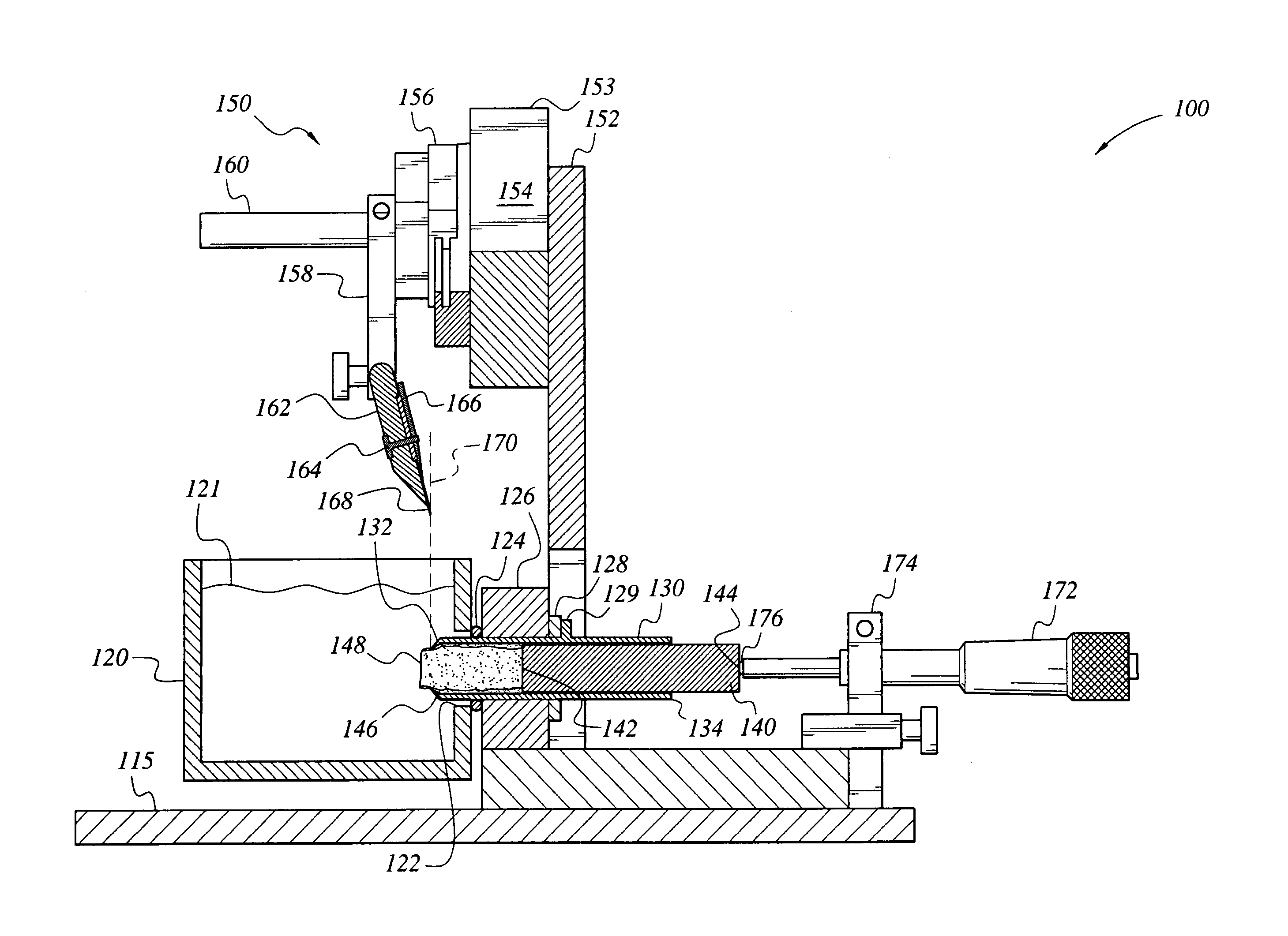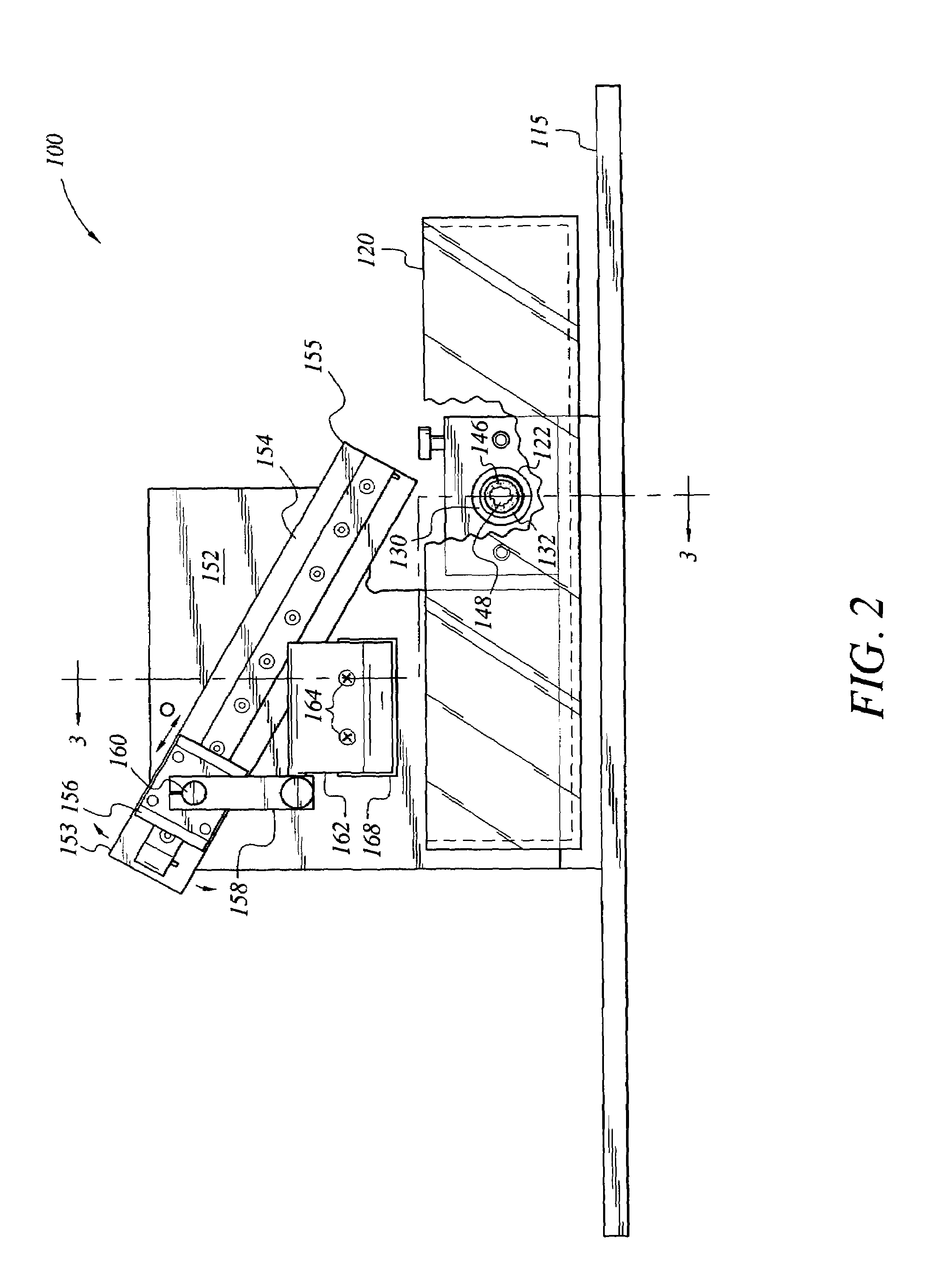Sliding blade microtome
a sliding blade and microtome technology, applied in the field of microtomes, can solve the problems of lack of specimen support, slow cutting speed, and inability to fully utilize vibratome, and achieve the effect of preventing the leakage of buffer medium
- Summary
- Abstract
- Description
- Claims
- Application Information
AI Technical Summary
Benefits of technology
Problems solved by technology
Method used
Image
Examples
first embodiment
[0017]The present invention is a sliding blade microtome, which is designated as 100 in the figures. The sliding blade microtome 100 is a tissue specimen-cutting device for slicing live and pre-fixed tissue. The microtome 100 has a base 115 for supporting a specimen syringe 130 having a first end 132 and a second end 134, a bath 120 having a syringe aperture 122, an adjustable cutting mechanism 150 and a micrometer drive 172. The first end 132 of the specimen syringe 130 is ideally disposed through the syringe aperture 122 of the bath 120. The second end 134 of the syringe 130 is disposed adjacent the micrometer drive 172.
[0018]Referring to FIGS. 1–3, the cutting mechanism 150 is shown comprising a mounting accessory 156 having an axis rod 160, a cross clamp 158, a blade holder 162 and a blade 168. The cross clamp 158 is disposed on the axis rod 160 of the mounting accessory 156. The cross clamp 158 serves as a support to which the blade holder 162 is pivotally attached. The blade 1...
second embodiment
[0028]FIG. 4 shows the microtome, which is an automated microtome 200 that drives the plunger 236 through the syringe 130 via a control unit 220, sensors 240, 250, motors 242, 252, lead screw blocks 244, 254 and lead screw 246, 256. The motor 242 drives cutting mechanism 232 through lead screw 246 and lead screw block 244. The motor 252 operates the plunger 236, moving it forward using lead screw 256 and lead screw block 254. The control unit 220 monitors the positions of the lead screw blocks 244, 254 through sensors 240, 250, respectively, and sends commands to control the motors 242, 252, respectively.
[0029]The microtomes 100, 200 differ in how the plungers 140 and 236, respectively, are pushed out of the syringe 130. However, both microtomes 100, 200 hold and support the specimen 148 using the specimen syringe 130. Also, both have the compressed lip at the first end 132 to compress the specimen 148 prior to being sliced by the blade 168. Furthermore, the cutting mechanism 150, 2...
PUM
| Property | Measurement | Unit |
|---|---|---|
| diameter | aaaaa | aaaaa |
| acute angle | aaaaa | aaaaa |
| light microscopy | aaaaa | aaaaa |
Abstract
Description
Claims
Application Information
 Login to View More
Login to View More - R&D
- Intellectual Property
- Life Sciences
- Materials
- Tech Scout
- Unparalleled Data Quality
- Higher Quality Content
- 60% Fewer Hallucinations
Browse by: Latest US Patents, China's latest patents, Technical Efficacy Thesaurus, Application Domain, Technology Topic, Popular Technical Reports.
© 2025 PatSnap. All rights reserved.Legal|Privacy policy|Modern Slavery Act Transparency Statement|Sitemap|About US| Contact US: help@patsnap.com



